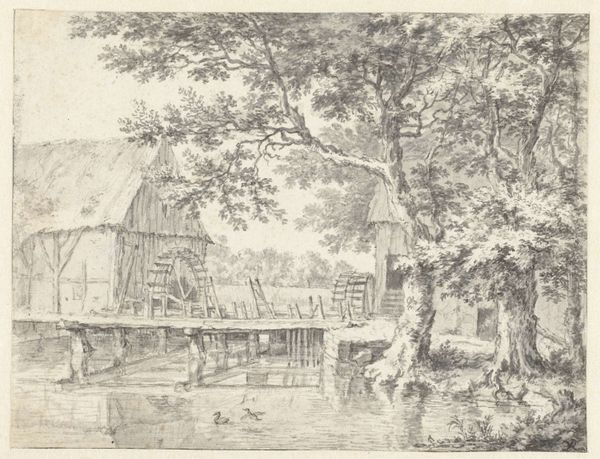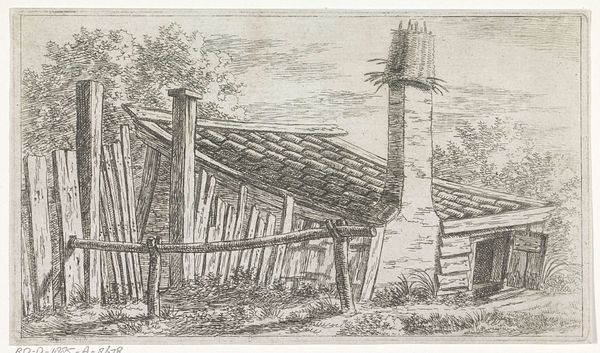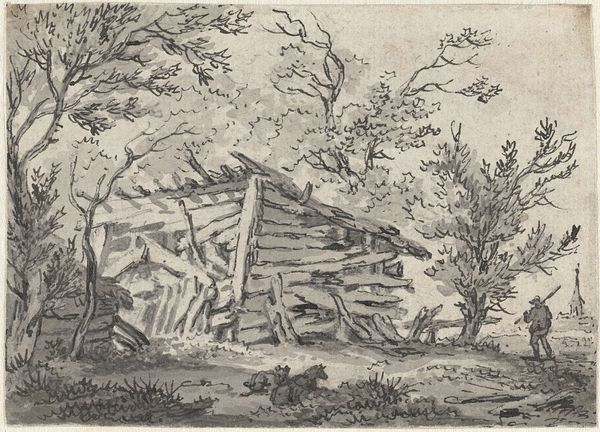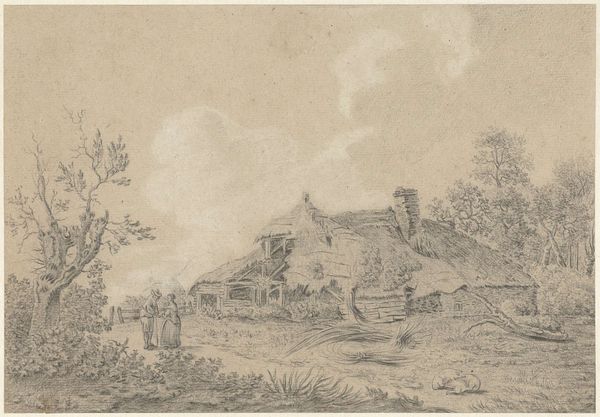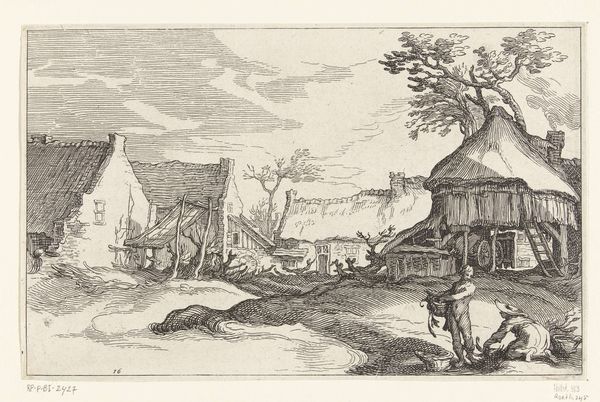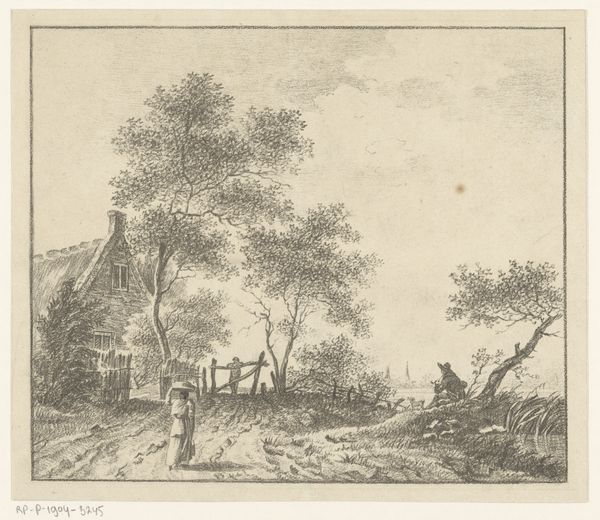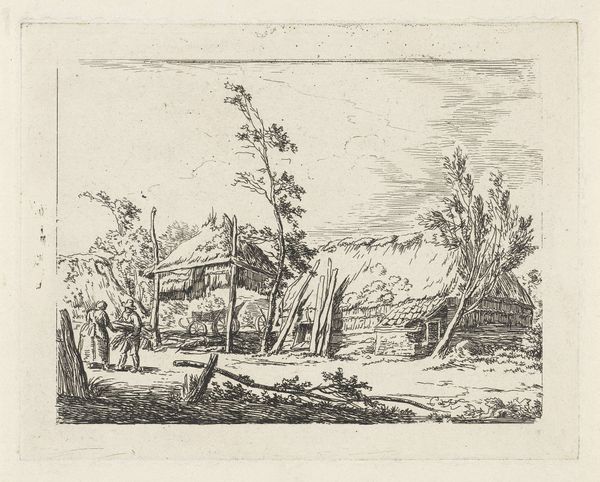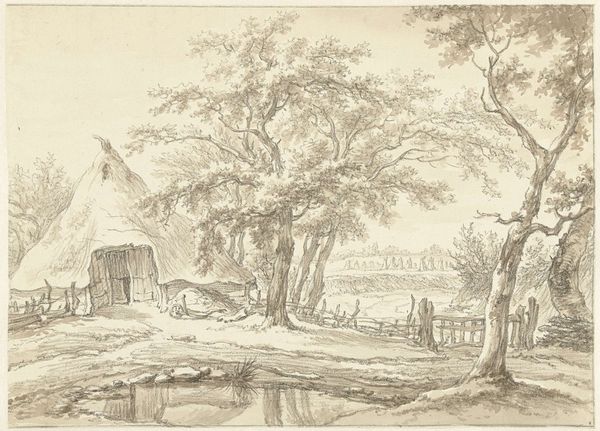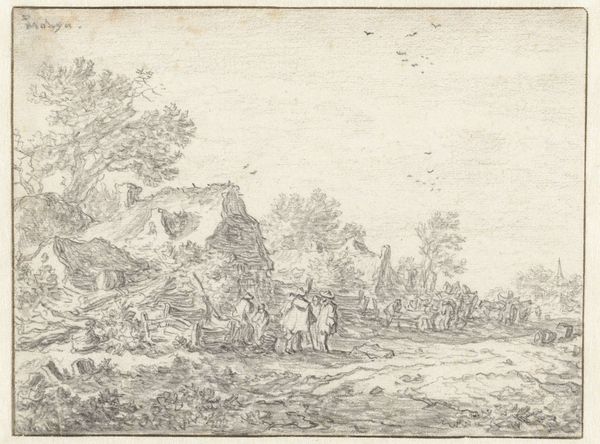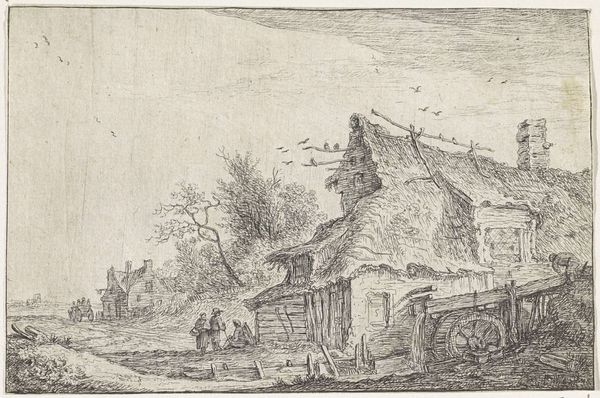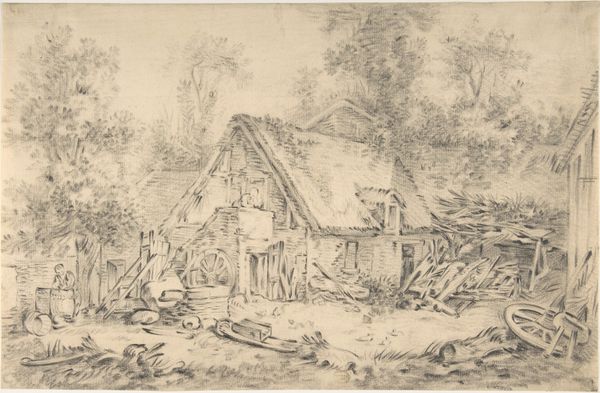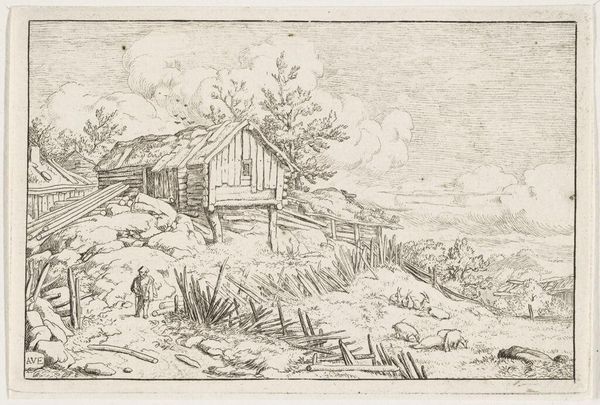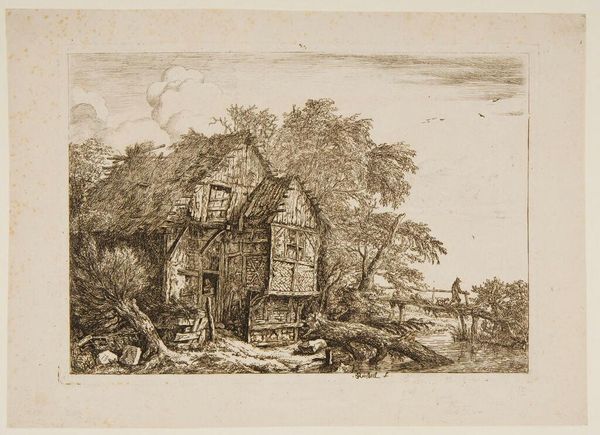
drawing, pencil, woodcut
#
drawing
#
toned paper
#
light pencil work
#
pen drawing
#
dutch-golden-age
#
pen sketch
#
pencil sketch
#
landscape
#
personal sketchbook
#
pen-ink sketch
#
pencil
#
woodcut
#
pen work
#
sketchbook drawing
#
sketchbook art
#
realism
Dimensions: height 200 mm, width 314 mm
Copyright: Rijks Museum: Open Domain
Editor: This is Jacob van Ruisdael's "View of a Watermill," a drawing from around 1650 to 1660. The pencil work and toned paper give it such a delicate feel, almost dreamlike. It feels like a memory. What do you see in this piece? Curator: The watermill as a structure becomes a focal point—a visual representation of humanity’s interaction with nature. Notice how Ruisdael renders it; it’s solid, but also yielding to time. Does the wheel itself suggest something cyclical to you? The seasons turning, life and death… Editor: I can see that! Like the wheel is eternally turning, just as nature eternally progresses. Curator: Exactly! The mill isn’t just a practical structure, but becomes almost totemic. Water in art, more often than not, speaks to something far beyond a means to hydrate—think lifeblood. Water is memory. How does this depiction resonate with you emotionally? Editor: I see what you mean! It feels both peaceful, in a quiet, contemplative way, but also kind of melancholy? Maybe the crumbling structure and dark shading gives off a subdued feeling. Curator: Indeed. The human-built structure slowly becomes overtaken by nature and reverts back, maybe signalling to an unavoidable passing of time? Ruisdael has left us with so much to consider from a simple, rustic image! What do you take away? Editor: I hadn't considered how much the imagery and symbols contribute to that feeling of cyclical nature, but also about how temporary even the most solid things can be! Thank you for providing some interesting ways to interpret this work!
Comments
No comments
Be the first to comment and join the conversation on the ultimate creative platform.
